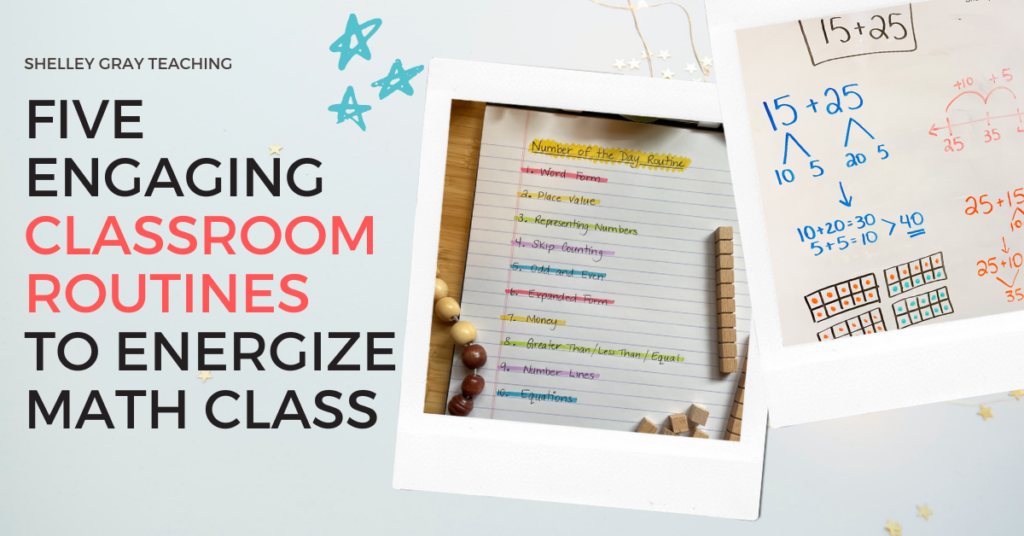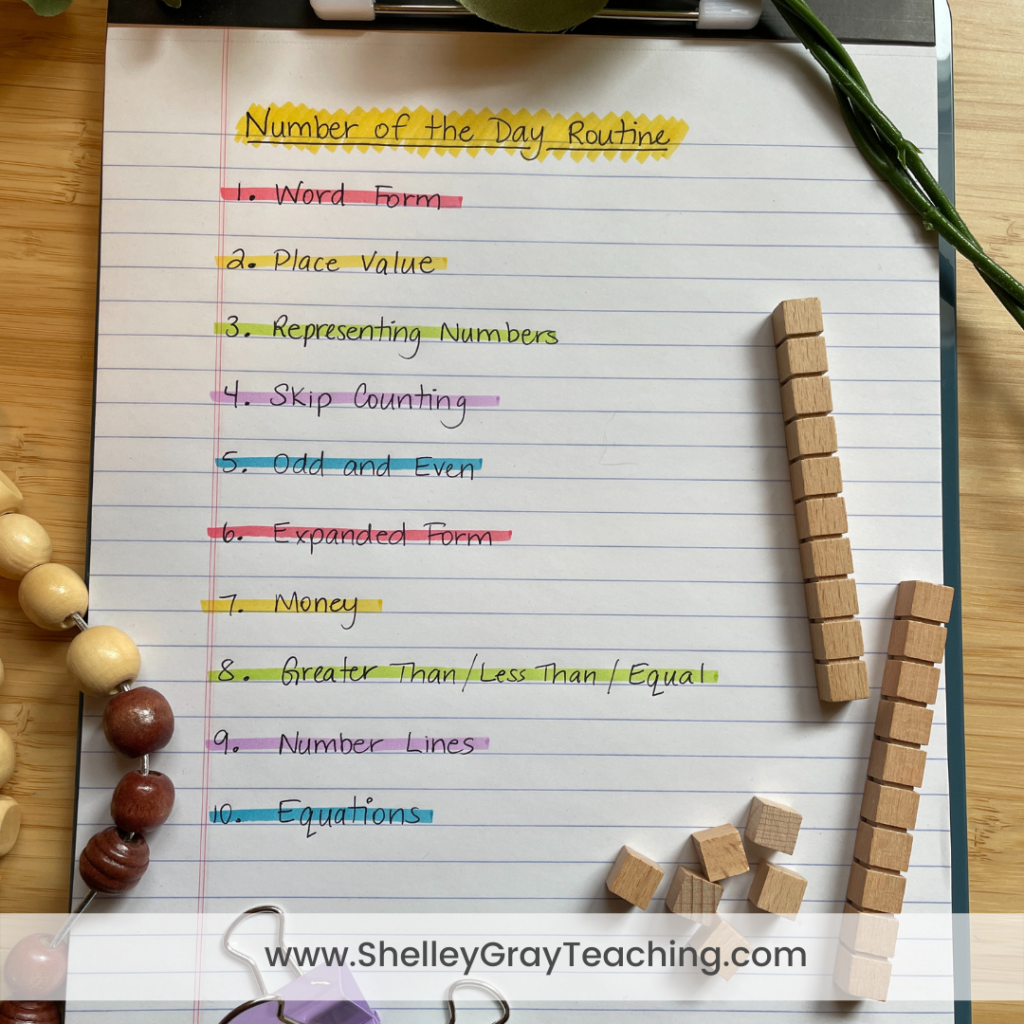
As you gear up for the exciting back-to-school season, it’s the perfect time to plan the math routines that will keep your students interested and engaged in learning, as well as foster a predictable environment where students know what to do and when to do it. Let’s explore five different math routines – Number Talks, Mystery Numbers, Number of the Day, Dot Talks, and Math Games – that will provide opportunity for flexible, strategic thinking and can kickstart the new school year with a bang!
Math Routine #1: Number Talks: Fostering Mathematical Discourse and Flexible, Strategic Thinking
Number Talks are short, 5-15 minute whole-class discussions with the goal of building number sense. The focus of the discussion is on all the many ways to solve the problem, rather than on the answer itself. During a number talk, the teacher poses a problem and students share strategies, reflect on others’ strategies, and learn to see math in different ways. Number Talks are a fantastic way to promote mathematical discourse among students. These discussions encourage learners to articulate their thought processes and strategies for solving math problems. Students develop a deeper understanding of mathematical concepts through open-ended questions and peer interactions. Number Talks also help them realize there isn’t just one right way to solve a problem. This routine not only enhances students’ problem-solving skills but also builds their confidence in sharing ideas.
Math Routine #2: Mystery Numbers
I hear from many teachers who use mystery number activities as their math routine at the beginning of math class or even when they enter the classroom in the morning. Mystery Numbers keep students challenged as they work through the clues, eliminating numbers as they go. Eventually, they are left with only one number remaining – the mystery number. One of the greatest advantages to using Mystery Numbers as a math routine in your classroom is that your students are building place value skills and math vocabulary without even realizing it.
⭐️ ⭐️ If you’re interested in kicking off the school year with mystery number activities as your morning math routine, here’s a blog post where you can find more information.
Math Routine #3: Dot Talks
Let me ask you a question. How many do you see?

Now I want you to think about how you saw them. Chances are good that you didn’t count them one by one. Did you see 4 groups of 3? 2 groups of 6? Are there any other ways you can see them?
Introducing Dot Talks to your math class routine can be a game-changer when it comes to building a solid foundation in number sense. Subitizing, the ability to recognize the number of objects in a group without counting, is a crucial skill for early mathematical development. Dot Talks utilize visual representations of dots arranged in various patterns, challenging students to quickly perceive and identify the quantity without needing to count individually. By incorporating Dot Talks into your daily routine, particularly at the beginning of the year as you assess number sense, you’ll be providing students with an engaging opportunity to enhance their subitizing skills, fostering a deeper understanding of numbers and paving the way for more complex mathematical concepts.
Dot talks are also a fantastic precursor to number talks.
⭐️ ⭐️ Interested in learning more about dot talks and subitizing for number sense? Here’s a blog post to help you get started.
Math Routine #4: Number of the Day
The Number of the Day routine allows students to explore a single number in-depth. Each day, a new number is chosen, and students engage in various activities related to that number. They might break it down into its parts (decompose), create equations that equal the number, explore its place value, and even represent it using different models. This routine helps students understand the versatility of numbers and appreciate the interconnectedness of math concepts.
⭐️ ⭐️ Here are 10 ideas to include in your number of the day routine.
Math Routine #5: Math Games
I love math games for several reasons. First of all, they are an effective way to reinforce skills, particularly when it comes to fact fluency. Second, they can often be played with little to no prep and are a great way to break up a longer lesson. But the reason that I love math games the most is that they energize students and help them realize that math is fun! Although I love math games for the end of class, I also often like to begin a math class with a game. It gets students’ minds working right away, and puts them in a more energetic state before the lesson or independent work time begins.
⭐️ ⭐️ If you’d like to start collecting a solid repertoire of math games to play with your Grades 2-7 students this year, here’s a weekly email series that you’ll love!
I hope these five math routines are useful to you! What are your favorite routines for math class? I’d love to hear in the comments below!










